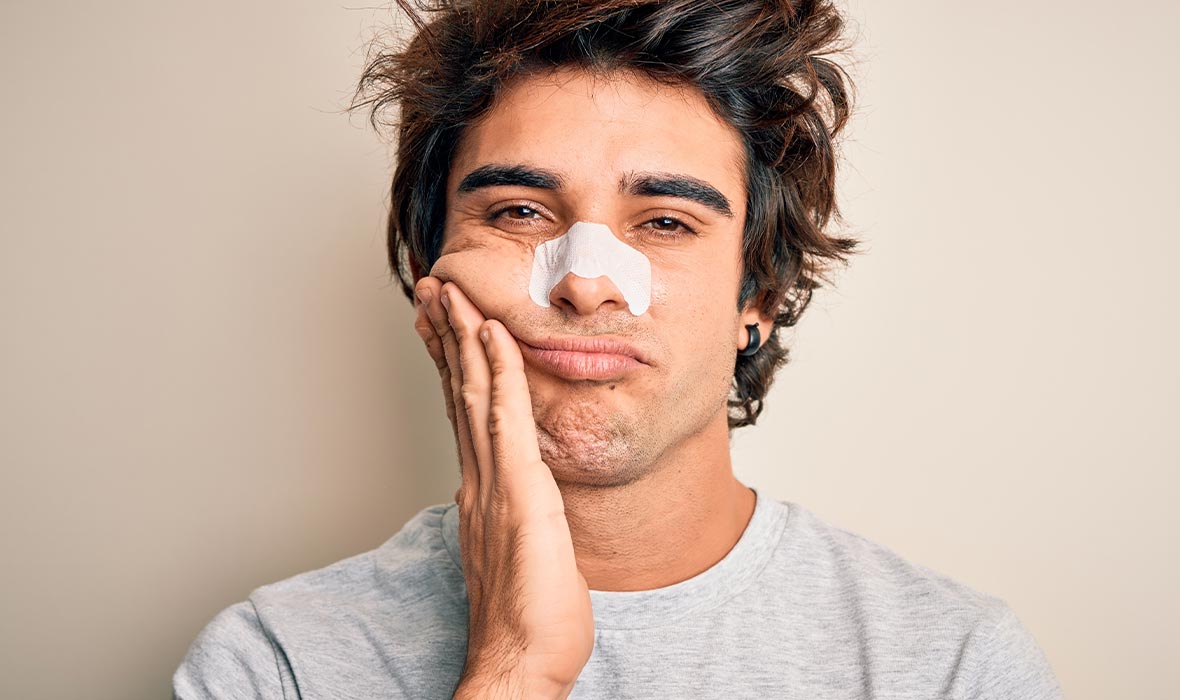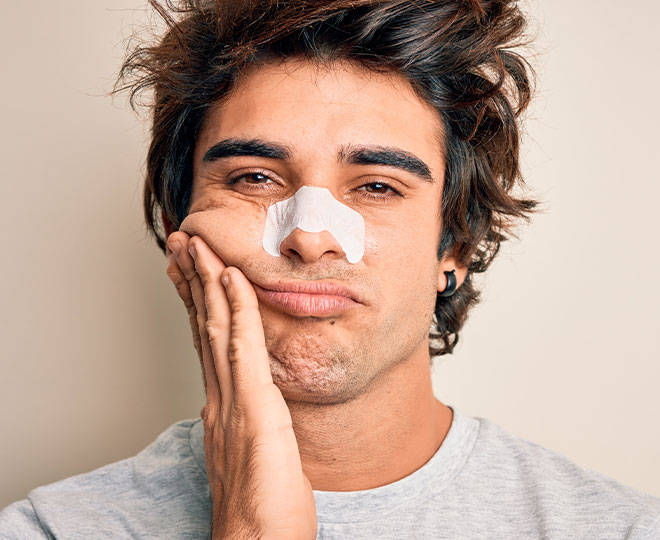You’re probably already somewhat familiar with blackheads, those tiny acne bumps with their characteristic black tips. This type of acne is most often found on the face, but also appears in places like your back, chest, neck, arms or shoulders. There’s a common myth that blackheads get their color when a pore is clogged by dirt. But, the reality is that their color comes from trapped oil on your skin (sebum) that is exposed to oxygen, turning it from yellowish to black.
But how do you get blackheads? And perhaps more importantly, how do you get rid of them? Let’s take a deep dive into blackheads. We’ll explore their causes, behaviors that contribute to their growth and even ways to prevent them.
What causes blackheads?
Blackheads form when your hair follicles, also known as pores, get clogged by a mix of dead skin cells and sebum. Sebum performs the vital function of keeping your skin hydrated and protected naturally. But if your body produces too much of it, your skin can look and feel oily and become more prone to acne. If the bump that forms above a clogged pore is closed off at the top, the trapped sebum remains yellowish or whiteish, leading to a whitehead. If the bump is open and exposed to oxygen, you end up with a blackhead. Making sure to recognize the difference between blackheads and whiteheads will help you treat both in the best way possible.
The behaviors and conditions described below can contribute to the factors that make blackheads more common. Identifying these and considering ways to curb them will be key in preventing blackheads later on.
-
Buildup of dirt, oil and debris
Your skin is constantly in a state of shedding and regrowing skin cells as part of its healing process. This is called skin cell turnover. As the new skin cells form under the surface, the dead skin cells rise, and can eventually accumulate on the surface. Similarly, excess sebum can build up, making your skin feel oily and look shiny. No fun, right? Your skin also picks up dirt throughout the day. Even makeup, if not properly removed, can accumulate in your skin. All this material remaining on your skin, some foreign and some natural, can mix together, clogging your pores and creating blackheads.
-
Oily skin
The people most likely to have excess oil on their skin have (you guessed it) the oily skin type. Oily skin is generally more prone to acne because excess oil is the underlying cause of essentially all forms of acne, blackheads included.
-
Excessive sweat from exercise, heat or stress
Sweat is yet another material that, when left on your skin for too long, can contribute to clogged pores. Workouts are generally great for your body and skin but after a workout, the sweaty environment on your skin can cause all those elements left behind on your skin to mix more easily. This goes for sweat from being in the sun for a long time as well. And beyond blackheads, the humid, sweaty environment is the ideal condition for acne-causing bacteria to enter your pores. So, make sure to always cleanse your skin morning, night and just after your workouts.
-
Haircare product residue or greasy hair
If your haircare products move from your scalp and hair down to your skin, they can contribute to clogged pores. Similarly, greasy hair can also end up clogging your pores. However, you don’t have to give up your favorite products! Just make sure to protect your skin by keeping hair off your face and be sure to wash your hair thoroughly and regularly. Also, make sure to change your pillowcase regularly to keep from resting your clean face on a dirty surface.
-
Hormonal shifts
It’s also worth noting that hormonal shifts can increase sebum production, leading to more blackheads. Therefore, blackheads can be more common during your teenage years. However, hormones stick around your whole life, performing vital functions for your body. You may experience hormonal shifts as side effects of certain medications, foods or even stress.
Tips for preventing blackheads
You can start helping to prevent blackheads by limiting the behaviors and conditions mentioned above that contribute to them. But even if your skin isn’t visibly oily and even if it doesn't feel rough and overloaded with dead skin cells, you can still get blackheads. That’s where the Proactiv+® Acne Treatment System comes into play to save the day.
The first step in the system is to cleanse your face with the Skin Smoothing Exfoliator. Exfoliation with a chemical exfoliant helps gently lift impurities to the surface for them to be swept away. Cleansing twice a day helps stave off the accumulation of dead skin cells and other debris. Make sure to cleanse an extra time just after you work out or sweat excessively. And remember that over-cleansing can lead to irritation and dryness, which in turn can lead to your skin overproducing sebum.
The next step in the Proactiv+® Acne Treatment System is the Pore Targeting Treatment, which delivers blemish-fighting medicine deep inside your pores, the starting point for blackheads. The treatment uses benzoyl peroxide, which primarily helps combat acne-causing bacteria.
The final step in this proven acne-fighting system is the Complexion Perfecting Hydrator, which helps calm redness, brighten skin’s tone and helps fade post-acne marks. Moisturizers are key to helping to combat blackheads because dry skin can actually lead to excess oil. While it’s true that oily skin is the primary skin type featuring excess oil, dry skin is severely lacking in oil, which can cause your skin to overproduce sebum to catch up to its sufficient hydration level. Applying daily moisturizer can help keep everything in balance.
The bottom line
Blackheads can be frustrating, especially if you frequently experience them. But treating and preventing blackheads is possible, with a few healthy skincare habits and tips.






